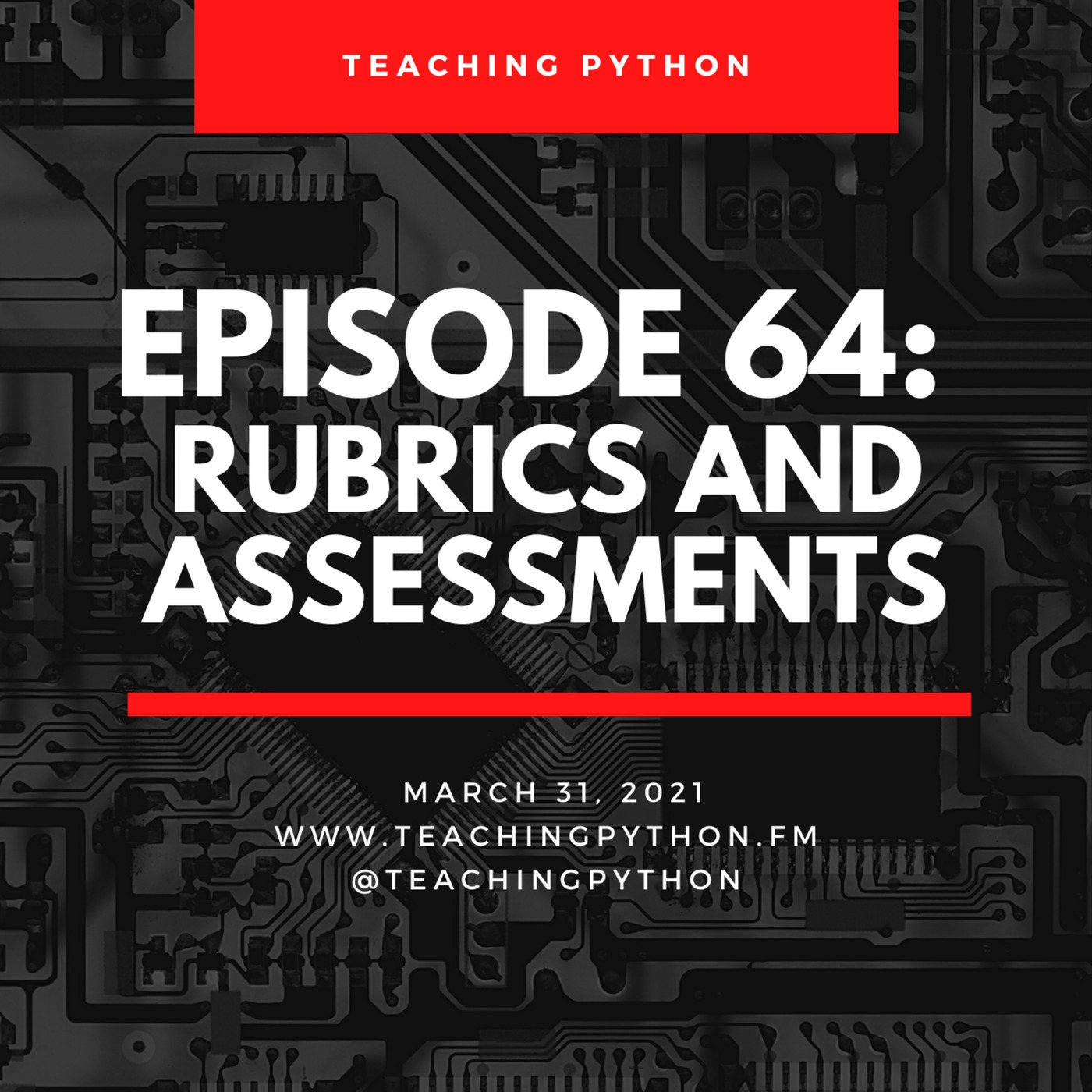Episode 64
Rubrics & Assessments
March 31st, 2021
52 mins 37 secs
Tags
About this Episode
That's right: we're digging deep into assessments using rubrics. We know what you're thinking, rubrics are BORING and teacher-y. But rubrics are POWERFUL for learning and you can use them outside of the classroom too!
According to ASCD
“The word rubric comes from the Latin word for red. The online Merriam-Webster dictionary lists the first meaning of rubric as "an authoritative rule" and the fourth meaning as "a guide listing specific criteria for grading or scoring academic papers, projects, or tests." How did the name for a color come to mean a rule or guide? At least as far back as the Middle Ages, the rules for the conduct of liturgical services—as opposed to the actual spoken words of the liturgy—were often printed in red, so the rules were "the red things" on the page.
Benefits of a Rubric
“Rubrics are important because they clarify for students the qualities their work should have. This point is often expressed in terms of students understanding the learning target and criteria for success. For this reason, rubrics help teachers teach, they help coordinate instruction and assessment, and they help students learn.
“Rubrics are useful tool to help students and teachers:
- work towards a shared goal,
- Giving students a rubric before they begin working ensures that students and teachers are working towards a shared goal.
- facilitate constructive feedback,
- assess students’ learning on multiple elements of a project.
- Student can analyze their own work
- provide consistency in evaluating
To allow extension of learning and “WOW” factors:
Single Point rubrics-- meets expectations but allows (forces) extensions
“Single Point Rubric” in 2000 during a conference presentation by someone named Mary Dietz. Attending that conference was a researcher named Jarene Fluckiger, who published a study on its effectiveness in 2010. (The reference to Dietz is in Fluckiger’s paper, but no one named Dietz has published anything on the topic.)
From one of our favorite rubrics at Northeastern University.
Percentage for criteria with a built in a 2% “AMAZING” category. That’s reserved for solutions that absolutely blow us away. Doing exactly what’s asked of you does not earn a perfect grade; doing an incredible job with your solution earns a perfect grade. In each assignment, we’ll specify exactly what makes for an amazing solution
Episode Links
- CS5001 Homework Rubric — This rubric will be used to evaluate your homework assignments in CS5001. It will be applied to each Python program you submit (most assignments have multiple Python programs). In addition to numeric scores in each rubric category, your grader will provide written feedback as well, if there is something helpful we can contribute to your learning.
- The Power of Yet Mug – Teaching Python — Three letter words are often the most powerful. Y-E-T is the gateway to changing your mindset. When you add yet, you add possibility and purpose. Remind your students that "yet changes everything" with every sip that you take. These ceramic mugs not only have a fun design on them, but also a colorful rim, handle, and inside, so the mug is bound to spice up your mug rack.
- iRubric: Python mini project rubric - QX73A82: RCampus — Grading Rubric for Python guessing game.
- Single Point Rubric: A Tool for Responsible Student Self-Assessment
- The Big Book of Small Python Projects: 81 Easy Practice Programs: Sweigart, Al: 9781718501249: Amazon.com: Books — Deploy Python creatively and effectively through this collection of short coding projects carefullly curated by best-selling author and Python expert Al Sweigart. This curated collection of simple Python projects lets you dive right in and make digital art, games, animations, number-crunching tools and more – right away! Forget standard step-by-step tutorials; instead, author Al Sweigart takes a learn-by-doing approach that provides you with over 80 programs to manually copy, run, and play with. Once you see how the code works, it’s time to experiment with your own changes and practice re-creating them yourself.

